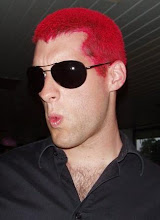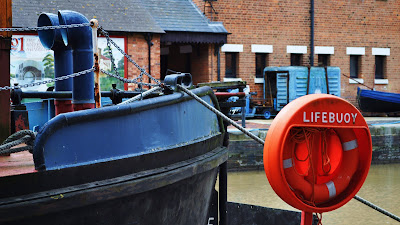I have been so busy at work and the weather has been so poor recently that I haven't really done much on TAOP course. So, to get myself back into the material I decided to take a day trip into London to looks around some gallery and exhibitions to get myself back into a photography mood.I looked at a lot of artist's work during my trip that took me all over London, including Brixton - yikes.
In this blog entry I will write down some thoughts I had about x2 artist's work (I looked at much more, but that's for another time).
One of my first stops was the
photography gallery at the Victoria and Albert museum that boasts its collection to be
"one of the largest and most important in the world". Despite their claim they have dedicated only a small room in the museum to display its acquired pieces (around 40) and I was somewhat disappointed. Despite this, a number of pieces really caught my attention and may have an influence on my work for Assignment 3.
An epically scaled and untitled piece from
Gregory Crewdson's series
"Beneath the Roses" had me staring at it for a very long time. The piece was a staged scene in an American town; taken in the twilight, the frame had a cold blue tint that made it feel very surrealistic. There was was snow on the ground and rooftops of wooden homes, no leaves on the trees and an abandoned playground. Also, bizarrely, there is an open fence and garage door that clearly showed a female figure - she is not letting a vehicle in (even though the garage is too littered to accommodate one), she is merely staring straight at the camera with a most disturbing grin. The piece was very nearly a movie still in its staging, however it is a from a series of photographs that have their own story to tell in an individual frame. It very much interested me as I am quite the fan of the surreal and (morbidly) take an interest in things that lean toward horror. Here is an interesting quote from the artist about the
Beneath the Roses series:
'I wasn’t interested in that whole tradition of making a kind of objective portrait of a place through pictures. What I was more interested in was trying to create a language that hovered somewhere between reality and fiction. So I was interested in using this place, this setting, the inhabitants of this town as characters in my own narrative. I should also be clear that I was less interested in literal narrative than I was in trying to explore psychological dynamics through the use of light and colour.'For TAOP, this work has inspired me to start thinking about possibly setting up (albeit in a somewhat down-scaled version) my own outdoor scenes and using the twilight and/or white-balance for Assignment 3.
Later in my day I went to see x2 series of
Kurt Tong's work at the
Photofusion gallery in Brixton. The first series of photographs,
"In Case it Rains in Heaven", was of Chinese joss paper offerings that are burned for the dead. This held little interest for me as stock photography but I found the second series most intriguing.
"Memories, Dreams; Interrupted" is a series of works which explores the concept of memories. Tong used wet-film techniques that deliberately degrade the roll and digitally reconstructs the image. The result is a series of pictures that certainly aren't perfect but give flashes of colour of broken memories. It very much reminded me of J. M. W. Turner's work using colour to create mood in a painting rather than detail. I have been further inspired for Assignment 3 to not necessarily look for the perfectly focused photograph and perhaps use slower shutter speeds and movement to focus more on colours rather than the subject matter.
*No copyright infringement intended - photographs will be removed immediately upon request
 Click here to view album
Click here to view album 




